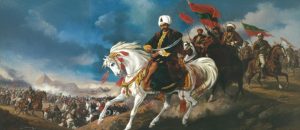OTTOMAN DYNASTY
A 600-Year Sultanate
For over six centuries, the world revolved around a single family: the House of Osman. This is the story of the dynasty that built a global empire from the heart of Topkapi Palace.
Journey through a timeline of 36 sultans, from the visionary conquerors to the reformist lawgivers, and discover the internal laws of succession, the rise of the powerful women of the Harem, and the key events that defined an imperial legacy.

Sultans of the Ottoman Dynasty
From the visionary founder of the palace, Mehmed the Conqueror, to the magnificent lawgiver, Suleiman, discover the lives, triumphs, and tragedies of the 36 sovereigns who ruled a world empire from the heart of Topkapi Palace.
An Istanbul Classic: The Fisherman's Legend
Arnavutköy Balıkçısı: The Soul of a Seaside Village, The Heart of a Great City
Beyond the grandeur of palaces and mosques lies the authentic rhythm of Istanbul: the Bosphorus village. In the heart of historic Arnavutköy, our tables have been a landmark for decades.
Here, the day’s catch is honored, mezes tell stories, and the gentle sound of the waves provides the only soundtrack you need. This is a rite of passage for those who seek the genuine taste of the city.

The Valide Sultans
They were mothers, wives, and regents.
Explore the stories of the formidable women of the Harem, like Hürrem and Kösem, who wielded immense power and controlled the destiny of the Ottoman Dynasty from behind the veil.

The Uncrowned Princes
For every Sultan who sat on the throne, there were brothers who lived in their shadow.
Delve into the poignant stories of the princes who, due to the laws of succession or the twists of fate, never ruled but left their own indelible mark on history.
Enrich Your Exploration

Four Seasons:
Bosphorus, Perfected

Garenta: Discover More of Istanbul
the landmarks; experience the
real city. Garenta offers the freedom to discover Istanbul's hidden treasures at your own pace.
Imperial Princesses
More than just daughters of the Sultan, these imperial princesses (sultanas) were often powerful political players, patrons of architecture, and key figures in the court.
Discover the influential lives of women like Mihrimah Sultan in Ottoman Dynasty.
Frequently Asked Questions
about Ottoman Dynasty
Who was the first Ottoman Sultan?
The Ottoman Dynasty was founded by Osman I in the late 13th century. However, the Sultan who conquered Constantinople and established Topkapi Palace as the heart of the empire was Mehmed II, the Conqueror.
How was the next Sultan chosen?
Initially, the succession was a brutal “survival of the fittest,” often leading to civil war between the sons of the late Sultan. Later, this was replaced by the law of fratricide, and eventually, by the principle of seniority, where the eldest living male member of the dynasty would inherit the throne.
What does "Sultanate of Women" mean?
This refers to a period of over a century when the mothers (Valide Sultan) and wives (Haseki Sultan) of the Sultans held extraordinary and direct political power, often acting as regents for their young sons and influencing the governance of the empire.
Did all princes live in fear of being executed?
In the early centuries, yes, the threat of fratricide was very real. After the 17th century, this practice was replaced by the “Cage System” (Kafes), where princes were kept in comfortable but monitored seclusion within the Harem instead of being killed.
Who was the longest-reigning Sultan?
The longest-reigning monarch of the Ottoman Dynasty was Suleiman the Magnificent, who ruled for 46 years (1520-1566), a period considered the empire’s Golden Age.
How many Sultans ruled from Topkapi Palace?
From its construction by Mehmed II in the 1460s until the move to Dolmabahçe Palace in the mid-19th century, Topkapi Palace was the primary residence and administrative headquarters for 25 Ottoman Sultans.
Why is it called the "House of Osman"?
The dynasty is named after its founder, Osman I (Osman Gazi in Turkish). All subsequent 35 Sultans were his direct patrilineal descendants, making it one of the longest-reigning continuous dynasties in world history.
















